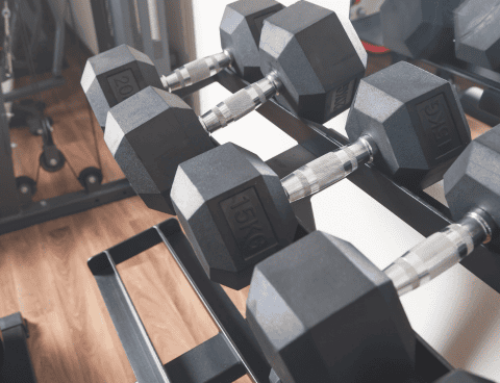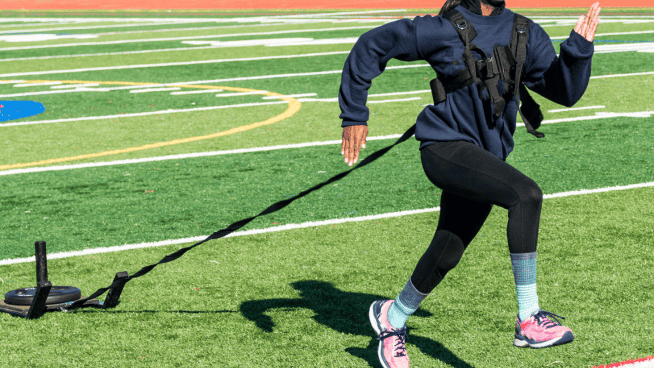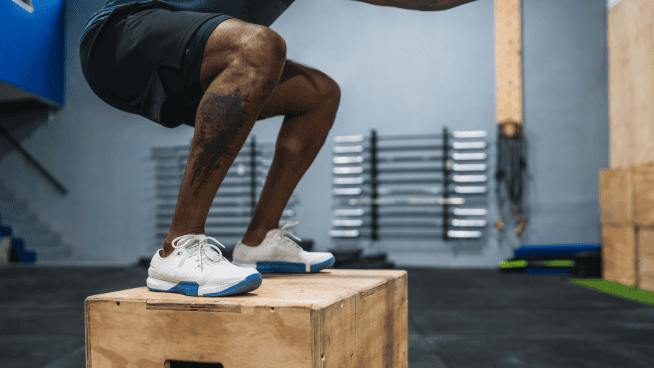Why Every Athlete Needs In-Season Strength Training (and How to Do It Right)
You’ve just spent the last four to six months training hard and pushing your body to new limits. You have gotten bigger, stronger and faster with hopes that your new capabilities will help you perform at a higher level in the upcoming season.
So then why do so many athletes (and coaches) stop strength training once their season begins?
Is it a fear of being tired or sore from a workout? Or is it a fear that it will cut into practice time? The former is a common excuse an athlete might use to avoid training during the season, while the latter’s a common reason a coach may provide for why their team doesn’t do in-season training.
But no matter the reason, the fact is this—strength training is often the most neglected aspect of physical preparation once the season begins. Between practice, film and games, the weight room often gets left out of the equation. Although it might seem like no big deal, an extended layoff from strength training can torpedo an athlete’s overall performance.
Why You Need In-Season Strength Training
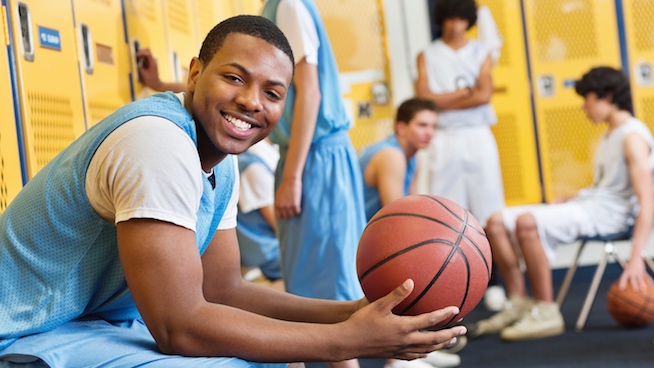
Maintain Performance
Skipping out on the weight room for the entirety of the season can have significant detrimental effects on an athlete’s strength levels. The stronger an athlete is, the more force they can produce. The more force they can produce, the faster they’ll run, the higher they’ll jump and the harder they’ll hit.
An athlete or team wants to be playing and feeling their best when it matters the most. Regardless of what sport you play, the most important games are going to be played at the end of your season. No one wants to be at their strongest during the first game of the season only to see their strength and speed shrivel away just as the calendar turns to those crucial late-season and postseason games. That’s exactly what you’re setting yourself up for if you don’t perform any in-season strength training. A loss of training-induced body adaptations in response to a lack of training stimulus is known as “detraining.” For all but the elite of the elite, avoiding the weight room for a few weeks will be enough to kickstart your detraining and drain your gains.
Consider this: in the week leading up to Super Bowl LI, the New England Patriots were squatting 80% of their max. They were 20-plus weeks into the season by that point, but they knew how important their weight room work was to their continued success. For what it’s worth, the Patriots went on to win that game after overcoming a 25-point deficit.
Durability
The two most important qualities any athlete can have are availability and durability. Are you available to play? And are you durable enough to withstand the stressors of actually playing?
A strong athlete is a durable athlete. By maintaining, and in some cases increasing, one’s strength over the course of a season, an athlete is able to withstand the demands of their sport to a higher degree. From personal experience as an athletic trainer, I have seen athletes begin to break down at the end of the season, limiting their availability and their performance.
Don’t Lose Those Gains
You’ve worked hard all offseason to get stronger and more powerful, so why stop training just to have to start back all over again next offseason?
If you halt your strength training once the season starts, you’ll slowly regress back to where you were at the beginning of the offseason. Then what was the point of the offseason to begin with? If you’re constantly taking one step forward and two steps back in the weight room, you’ll never come remotely close to realizing your full athletic potential.
For long-term development of your physical abilities, strength training while in season is incredibly important. Every player wants to get better from year to year, but if you allow all your gains to disappear every time you’re in-season, that’s going to be extremely difficult.
How You Should Strength Train In-Season
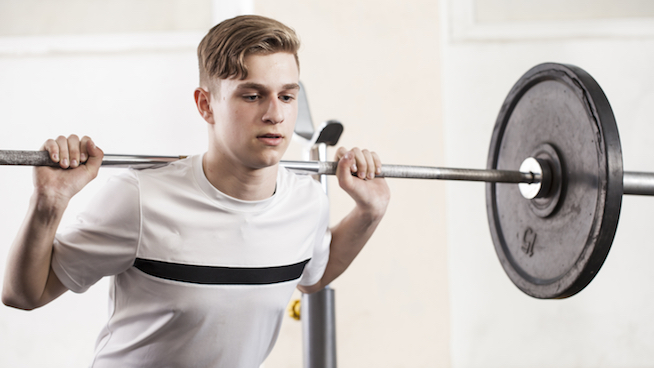
Now you know why you should strength train during your sport season. But how do you go about actually doing it?
Should you keep it light for high reps?
Should you go heavy?
What’s the best way to prevent training-related soreness from slowing you down during games and practice?
These general guidelines should help you answer some of these burning questions.
Maintain Maximal Strength
Maximal strength is the basis for all important sports performance qualities such as power and speed. Maximal strength is defined as the greatest amount of force a muscle or muscle group can voluntarily produce. That’s why just practicing and playing your sport will not be nearly enough to maintain or increase this essential quality.
It’s important to focus on max strength during your in-season weight room sessions to maintain your strength levels. Therefore, it is important to maintain a high intensity or to continue to lift heavy weights. Remember what I mentioned before about the Patriots squatting 80% of their max during Super Bowl week? You should bring that same mindset to your in-season strength training.
Manage Fatigue
The only thing that matters in-season is game day performance. That’s why managing your in-season fatigue is absolutely vital. One of the biggest contributors to fatigue is volume, both in practice and in training.
Most sports coaches are not going to budge on their practice times, so it is important to limit the amount of fatigue that occurs in the weight room. Focusing on strength and power rep ranges (1-5 reps per set) for a handful of sets (3 to 5 sets) will give you just the right amount of stimulus without creating too much fatigue. Utilizing techniques like cluster sets or giant sets can also help you get in the most time-efficient workout possible.
Use General Exercises
As you moved through your offseason, you hopefully went from general physical preparation exercises to more sport-specific movements. As you begin to move into your practice and game schedule, you should leave the sport-specific work to practice sessions and games.
Your weight room sessions should consist of general exercises to help maintain your total movement capacity as well as exercises that counteract some of the imbalances that can occur from the repetitive movements of your specific sport.
Limit Muscle Soreness
Muscle soreness can have a major effect on athletic performance. You can experience a decreased range of motion, a reduction in strength and power, and changes in technique. All of these are mechanisms the body uses to protect the tissues you damaged during your last workout (which was the goal, since tissue damage creates muscle growth).
There are two surefire ways to elicit soreness from your workouts—excessive eccentric loading and introducing new exercises. Eccentric loading can cause micro traumas in the muscle that can result in additional soreness. Obviously an athlete should be controlling the weight, but the focus should be on concentric strength rather than attempting to overload the eccentric contraction with lots of volume.
Introducing new exercises to your training program can also create muscle soreness as your body has never had to adapt to that stimulus. It may be a bit boring, but keeping your workouts simple and straightforward will allow you to train without it negatively affecting your play on the field. New, challenging exercises can also bring about DOMS, or delayed-onset muscle soreness, which is about the last thing you want when you’re in season.
Sample In-Season Training Week
While your exact in-season program will depend on a multitude of factors, including scheduling, time commitment, sport, athlete needs, etc., here’s what a reasonable 3-day in-season split might look like.
Session A
- A1) Trap Bar Deadlift 3×3-4 @ 85% your max
- A2) Overhead Medball Throws 3×3
- B1) Rear-Foot Elevated Split Squats 4×6
- B2) Dead Bugs
- C1) DB Rows 3×8-10
- C2) Push-ups
Session B
- A1) Back Squat 3×3-4 @ 85% your max
- A2) Box Jumps 3×3
- B1) OH Press 3×6-8
- B2) Pull-ups 3×4-5 reps
- C1) Stability Ball Ham Curls 3×8
- C2) Deadbugs 3×8/side
Session C
- A1) Bench Press 3×3-4 @ 85% your max
- A2) Lying Medball Chest Pass 3×3
- B1) RDL’s 3×6-8
- B2) Pallof Press 3×8/side
- C1) Step-ups 3×6/side
- C2) Single-leg Glute Bridges 3×10/side
Photo Credit: Steve Debenport/iStock, oleg66/iStock
READ MORE:
RECOMMENDED FOR YOU
MOST POPULAR
Why Every Athlete Needs In-Season Strength Training (and How to Do It Right)
You’ve just spent the last four to six months training hard and pushing your body to new limits. You have gotten bigger, stronger and faster with hopes that your new capabilities will help you perform at a higher level in the upcoming season.
So then why do so many athletes (and coaches) stop strength training once their season begins?
Is it a fear of being tired or sore from a workout? Or is it a fear that it will cut into practice time? The former is a common excuse an athlete might use to avoid training during the season, while the latter’s a common reason a coach may provide for why their team doesn’t do in-season training.
But no matter the reason, the fact is this—strength training is often the most neglected aspect of physical preparation once the season begins. Between practice, film and games, the weight room often gets left out of the equation. Although it might seem like no big deal, an extended layoff from strength training can torpedo an athlete’s overall performance.
Why You Need In-Season Strength Training

Maintain Performance
Skipping out on the weight room for the entirety of the season can have significant detrimental effects on an athlete’s strength levels. The stronger an athlete is, the more force they can produce. The more force they can produce, the faster they’ll run, the higher they’ll jump and the harder they’ll hit.
An athlete or team wants to be playing and feeling their best when it matters the most. Regardless of what sport you play, the most important games are going to be played at the end of your season. No one wants to be at their strongest during the first game of the season only to see their strength and speed shrivel away just as the calendar turns to those crucial late-season and postseason games. That’s exactly what you’re setting yourself up for if you don’t perform any in-season strength training. A loss of training-induced body adaptations in response to a lack of training stimulus is known as “detraining.” For all but the elite of the elite, avoiding the weight room for a few weeks will be enough to kickstart your detraining and drain your gains.
Consider this: in the week leading up to Super Bowl LI, the New England Patriots were squatting 80% of their max. They were 20-plus weeks into the season by that point, but they knew how important their weight room work was to their continued success. For what it’s worth, the Patriots went on to win that game after overcoming a 25-point deficit.
Durability
The two most important qualities any athlete can have are availability and durability. Are you available to play? And are you durable enough to withstand the stressors of actually playing?
A strong athlete is a durable athlete. By maintaining, and in some cases increasing, one’s strength over the course of a season, an athlete is able to withstand the demands of their sport to a higher degree. From personal experience as an athletic trainer, I have seen athletes begin to break down at the end of the season, limiting their availability and their performance.
Don’t Lose Those Gains
You’ve worked hard all offseason to get stronger and more powerful, so why stop training just to have to start back all over again next offseason?
If you halt your strength training once the season starts, you’ll slowly regress back to where you were at the beginning of the offseason. Then what was the point of the offseason to begin with? If you’re constantly taking one step forward and two steps back in the weight room, you’ll never come remotely close to realizing your full athletic potential.
For long-term development of your physical abilities, strength training while in season is incredibly important. Every player wants to get better from year to year, but if you allow all your gains to disappear every time you’re in-season, that’s going to be extremely difficult.
How You Should Strength Train In-Season

Now you know why you should strength train during your sport season. But how do you go about actually doing it?
Should you keep it light for high reps?
Should you go heavy?
What’s the best way to prevent training-related soreness from slowing you down during games and practice?
These general guidelines should help you answer some of these burning questions.
Maintain Maximal Strength
Maximal strength is the basis for all important sports performance qualities such as power and speed. Maximal strength is defined as the greatest amount of force a muscle or muscle group can voluntarily produce. That’s why just practicing and playing your sport will not be nearly enough to maintain or increase this essential quality.
It’s important to focus on max strength during your in-season weight room sessions to maintain your strength levels. Therefore, it is important to maintain a high intensity or to continue to lift heavy weights. Remember what I mentioned before about the Patriots squatting 80% of their max during Super Bowl week? You should bring that same mindset to your in-season strength training.
Manage Fatigue
The only thing that matters in-season is game day performance. That’s why managing your in-season fatigue is absolutely vital. One of the biggest contributors to fatigue is volume, both in practice and in training.
Most sports coaches are not going to budge on their practice times, so it is important to limit the amount of fatigue that occurs in the weight room. Focusing on strength and power rep ranges (1-5 reps per set) for a handful of sets (3 to 5 sets) will give you just the right amount of stimulus without creating too much fatigue. Utilizing techniques like cluster sets or giant sets can also help you get in the most time-efficient workout possible.
Use General Exercises
As you moved through your offseason, you hopefully went from general physical preparation exercises to more sport-specific movements. As you begin to move into your practice and game schedule, you should leave the sport-specific work to practice sessions and games.
Your weight room sessions should consist of general exercises to help maintain your total movement capacity as well as exercises that counteract some of the imbalances that can occur from the repetitive movements of your specific sport.
Limit Muscle Soreness
Muscle soreness can have a major effect on athletic performance. You can experience a decreased range of motion, a reduction in strength and power, and changes in technique. All of these are mechanisms the body uses to protect the tissues you damaged during your last workout (which was the goal, since tissue damage creates muscle growth).
There are two surefire ways to elicit soreness from your workouts—excessive eccentric loading and introducing new exercises. Eccentric loading can cause micro traumas in the muscle that can result in additional soreness. Obviously an athlete should be controlling the weight, but the focus should be on concentric strength rather than attempting to overload the eccentric contraction with lots of volume.
Introducing new exercises to your training program can also create muscle soreness as your body has never had to adapt to that stimulus. It may be a bit boring, but keeping your workouts simple and straightforward will allow you to train without it negatively affecting your play on the field. New, challenging exercises can also bring about DOMS, or delayed-onset muscle soreness, which is about the last thing you want when you’re in season.
Sample In-Season Training Week
While your exact in-season program will depend on a multitude of factors, including scheduling, time commitment, sport, athlete needs, etc., here’s what a reasonable 3-day in-season split might look like.
Session A
- A1) Trap Bar Deadlift 3×3-4 @ 85% your max
- A2) Overhead Medball Throws 3×3
- B1) Rear-Foot Elevated Split Squats 4×6
- B2) Dead Bugs
- C1) DB Rows 3×8-10
- C2) Push-ups
Session B
- A1) Back Squat 3×3-4 @ 85% your max
- A2) Box Jumps 3×3
- B1) OH Press 3×6-8
- B2) Pull-ups 3×4-5 reps
- C1) Stability Ball Ham Curls 3×8
- C2) Deadbugs 3×8/side
Session C
- A1) Bench Press 3×3-4 @ 85% your max
- A2) Lying Medball Chest Pass 3×3
- B1) RDL’s 3×6-8
- B2) Pallof Press 3×8/side
- C1) Step-ups 3×6/side
- C2) Single-leg Glute Bridges 3×10/side
Photo Credit: Steve Debenport/iStock, oleg66/iStock
READ MORE:


